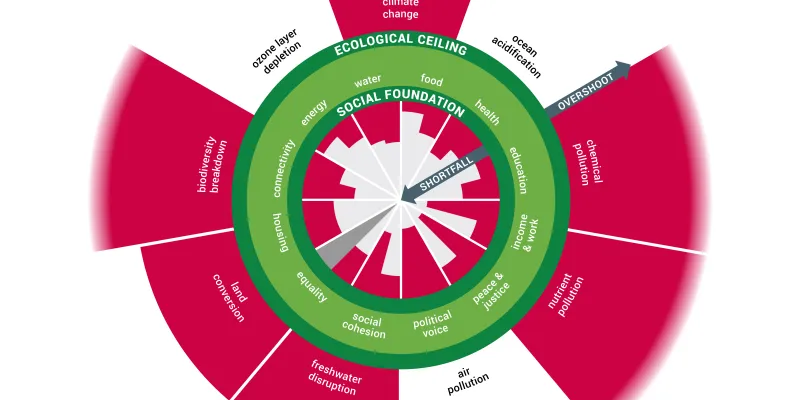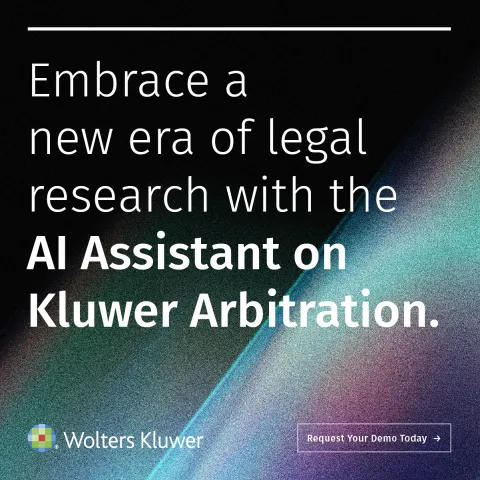Teenage Kicks
October 8, 2025
It’s now thirteen years since Kate Raworth introduced the idea of a doughnut shaped diagram to provide a visual representation of progress towards the goal of meeting the needs of all people within the means of the planet. As Raworth describes it:
“the Doughnut framework consists of the space between two concentric rings: the inner ring represents a social foundation, below which lies critical human deprivation, and the outer ring represents an ecological ceiling, beyond which lies critical planetary degradation.”
She has recently published an update of the work (in collaboration with Andrew Fanning) in a paper in the journal Nature. In addition to the updating the original doughnut diagram she has added some new material which tracks outcomes from 2000 to 2022 and disaggregates the global results into three country-clusters (poorest-40%, middle-40%, and richest-20% of countries).
The new report paints a sombre picture. Despite some modest progress in improving the social foundations (apart from food security and political voice), the position on the ecological boundaries continued to worsen between 2000 and 2022. The richest 20% of nations (15% of the global population) account for more than 40% of annual ecological overshoot, while the poorest 40% (42% population), experience more than 60% of the social shortfall. Over the same period overall global GDP more than doubled.
The challenge is to find ways of producing, distributing and exchanging the goods and services we need to survive and thrive in a way which moves beyond extracting value from nature or other people for the benefit of relatively few people - in other words stays within the doughnut.
Achieving this is a classic collective action problem, where people have a shared interest in a common good but fail to cooperate to achieve it because individual self-interest leads them to believe their own contribution won't make a difference or that they can benefit by free-riding on the action of others. No one individual, group or country has the means to do it alone - in many respects this is a classic prisoner’s dilemma, where what appears rational for the individual is sub optimal for the group.
Cooperation is essential to solve such problems, in theory it shouldn’t be too difficult to do this because we have been wired by evolution to be cooperative. Cooperation has been at the heart of our ability to learn, innovate and divide tasks to improve our productivity as a species. Unfortunately one of the elements of this wiring that encourages cooperation within groups is that we closely associate with those in our group and against those outside it. As Hanno Sauer puts it in his book 'The Invention of Good and Evil - A World History of Morality':
“The logic of cooperation means we want to be identified as trustworthy group members…it is important to send loyalty signals that can be perceived by other group members and understood as a sign of reliability.”
These signals can in turn generate adverse reactions from those not in the group, generating what he calls ‘a dynamic of escalating extremism’ - not unlike what we can observe in political circles today.
Effective cooperation requires a mindset that is willing to move beyond one-off transactions and zero-sum thinking and embrace the possibilities of a positive sum outcome based on mutual interests. This will help foster of more trusting environment, with less need for expensive, productivity reducing mechanisms to help ensure compliance. Again this is much easier at a smaller scale. The bigger the enterprise the more need for contracts and treaties to guard against free riding etc.
Mediation approaches and skills offer a tried and tested way of breaking down barriers between groups and encouraging positive-sum thinking - by building greater understanding of underlying needs, values and interests to provide a foundation for generating and evaluating options and taking collective decisions about actions to take. Again the issue seems to relate to scale - how can we apply what is learned at the micro level of dispute resolution and apply it to some of the macro level collective action problems that confront us?
It won’t be easy given the increasing polarisation and zero-sum mentality we see all around us, but it is essential. Without it there is little chance of the teenage doughnut framework recording real progress as it reaches adulthood, but with it there is some hope.
As the Undertones put it: "A teenage dream's so hard to beat.”
You may also like








Paul Sills
Editorial Comment – Teenage Kicks Charlie Woods’ thoughtful reflection on Kate Raworth’s Doughnut Economics reminds us that the collective challenges of our age—climate change, inequality, sustainability—are not merely economic or political problems. They are, at their core, relational problems. The “doughnut,” as a model of balance between social foundation and ecological ceiling, is in many ways a metaphor for mediation itself: how do we sustain relationships and systems in equilibrium, meeting the needs of all without breaching the boundaries that make cooperation possible? The article draws attention to a striking paradox. Despite our evolutionary wiring for cooperation, modern societies remain trapped in dynamics of distrust, competition, and short-term self-interest. The “dynamic of escalating extremism” that Woods cites from Hanno Sauer’s work captures much of what mediators see daily—polarised narratives, loyalty signalling, and the hardening of identity-based positions. In both global governance and individual conflicts, the challenge is the same: how do we reframe the conversation from us versus them to all of us together? The link between macro-level cooperation and micro-level mediation practice is compelling. Mediation offers practical tools—active listening, reframing, exploring interests rather than positions—that can transform zero-sum mindsets into positive-sum outcomes. Yet, as Woods notes, scale remains the great frontier. Mediation thrives in intimacy; global problems demand coordination across vast systems, cultures, and interests. The question, then, is how to translate the “micro-dynamics of dialogue” into the “macro-dynamics of policy and governance.” Woods’ piece also raises an implicit ethical challenge for mediators: to think of our work not just as resolving discrete disputes but as modelling the kind of cooperation our societies urgently need. The skills of empathy, curiosity, and creativity that define mediation could be powerful catalysts for systemic change—if we are bold enough to apply them beyond the mediation room. As the doughnut turns thirteen, it invites the mediation community to reflect on how our field might contribute to its “adulthood”—a world that operates within planetary limits while ensuring social justice. Perhaps, as the Undertones remind us, “a teenage dream’s so hard to beat”—but only if we nurture it into maturity. We invite readers to reflect on: How can mediators and mediation institutions contribute to solving collective action problems like climate change or social inequality? What lessons from mediation at the interpersonal or organisational level could be adapted to foster cooperation between nations, corporations, or communities? Is there a role for “macro-mediation”—structured dialogue processes that address global or societal impasses? How can mediators help counteract the “dynamic of escalating extremism” and rebuild trust across ideological divides? And finally, as Raworth’s doughnut enters its teenage years, how can our field ensure it grows into a framework of genuine balance—between people, planet, and prosperity? The doughnut’s journey mirrors our own as mediators: an ongoing pursuit of balance, understanding, and collective wisdom in a world too often divided by fear and scarcity.